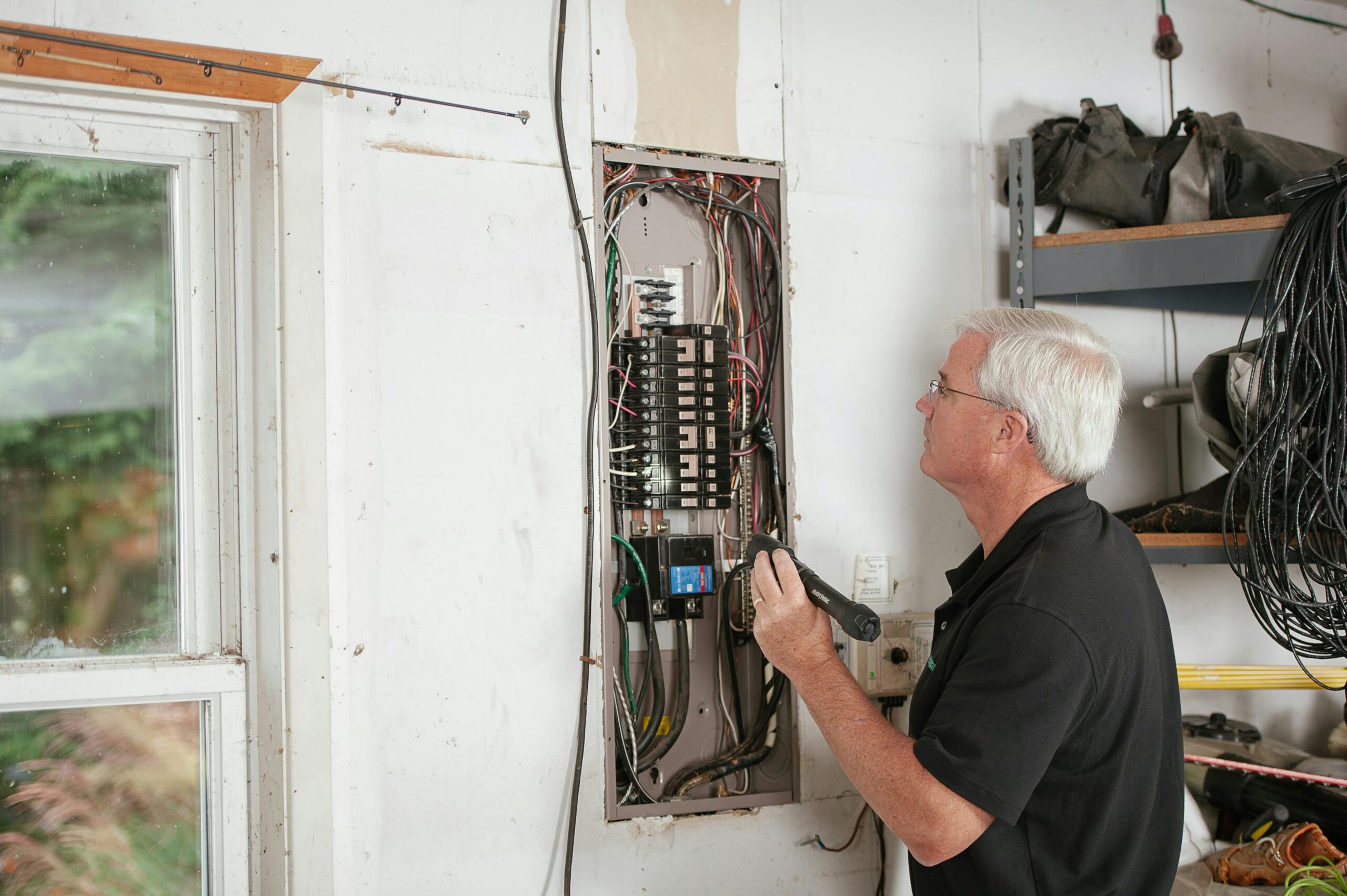Something always breaks. That’s the unspoken truth of homeownership. It doesn’t matter how careful you are—one day it’s the water heater, the next it’s the roof, and suddenly your weekend plans turn into a Google search for emergency plumbers. And if you don’t have a repair fund set aside? That unexpected cost doesn’t just hit your bank account—it hits your peace of mind.
If you’ve ever felt that sinking-stomach dread when something breaks and you’re not ready to fix it, you’re not alone. Maybe you’ve patched things together hoping they’d hold out a little longer. Or you’ve told yourself you’ll deal with it next month… when things “calm down.” But deep down, you know waiting only makes things worse.
You don’t need to live in fear of the next repair bill. This guide will show you exactly how to budget for home maintenance so you’re ready when life happens—without the stress, panic, or debt. Let’s get started.
1. Why Home Repairs Always Feel Like a Financial Surprise
You’re not imagining it—something always breaks at the worst possible time. A leaky roof right after you book a vacation. A dead furnace in the middle of January. Somehow, home repairs manage to sneak up just when your budget feels tightest.
This isn’t a personal failing. It’s the nature of homeownership. Materials wear out. Systems age. Weather shifts. Life doesn’t care if you’re ready or not—and without a plan in place, it’s easy to feel blindsided and financially vulnerable.
Ignoring it won’t make it better. Postponing necessary repairs to “save money” often ends up costing more in the long run. The goal isn’t to eliminate surprises completely—it’s to make sure they don’t wreck your finances when they come.
2. The Golden Rule: Plan for 1% to 4% of Your Home’s Value
A good starting point is to set aside 1% to 4% of your home’s value per year for maintenance and repairs. That means if your home is worth $300,000, your annual maintenance budget should land between $3,000 and $12,000.
Why the big range? Because not all homes wear and tear the same way.
- Newer homes in mild climates may land on the lower end—around 1% is often sufficient for routine upkeep.
- Older homes, homes in extreme weather zones, or those with dated appliances and infrastructure should plan closer to 3–4%.
- If you’re unsure, 2% is a solid baseline.
The beauty of this approach is that it makes surprise expenses predictable. Instead of reacting in panic, you’re preparing with intention.
3. Make It Automatic: How to Set Up a Maintenance Fund That Builds Itself
If you wait until something breaks to save money for it, you’re always behind. That’s why the smartest way to prepare for home repairs is to set up a maintenance fund ahead of time—just like you would for car insurance or back-to-school season.
Start by taking your annual estimate and dividing it by 12. That’s your monthly contribution target. If your number is $6,000/year, that’s $500/month. Too much? Start with what you can—$100 a month is better than nothing.
Then automate it:
- Open a separate high-yield savings account labeled “Home Maintenance.”
- Set up recurring monthly transfers—even small ones build over time.
- Use your checking account only for scheduled bills so maintenance doesn’t eat into everyday spending.
Treat this like a non-negotiable bill, not an optional “if I have anything left” line item. You’ll thank yourself later.
4. What to Expect: Common Repairs by Age, Season, and Square Footage
Knowing what’s likely to go wrong—and when—takes the mystery (and some of the panic) out of repairs. Here’s what most homeowners can expect:
- Annually: HVAC inspections, gutter cleaning, caulking around windows, water heater flushes, pest control.
- Every 3–5 Years: Roof inspections, repainting trim or siding, resealing decks or driveways, appliance wear.
- Seasonal: Spring = sump pump check, foundation drainage. Summer = A/C maintenance. Fall = roof check, weatherproofing. Winter = heating system, pipe insulation.
Also, bigger homes cost more to maintain, not just in labor and materials but in wear and tear. If you’ve upsized, make sure your budget grows too.
5. The DIY Dilemma: When to Fix It Yourself (and When to Call a Pro)
It’s tempting to roll up your sleeves and handle everything solo—but not all repairs are created equal.
Ask yourself:
- Is it safe? Electrical work, roof repairs, and gas line issues are serious risks.
- Will it cost more if I mess up? Water leaks, incorrect installations, or code violations can make DIY a gamble.
- Do I have the right tools and time? Watching a video is different from doing it yourself in real life.
If you go pro, be a smart shopper:
- Get at least three quotes—prices vary wildly.
- Look for licensed and insured contractors only.
- Check online reviews, but also ask neighbors or community forums.
- Always get the estimate and work agreement in writing.
For smaller jobs, you can build DIY confidence slowly—start with caulking, painting, or simple fixture swaps.
6. Preventative Care: The Cheapest Repair Is the One You Never Need
Too often, we don’t act until something’s already broken—and by then, it’s usually more expensive.
Preventative care is your financial armor:
- Clean your gutters to prevent water damage.
- Service your furnace before winter, not after it fails.
- Check caulking around tubs, sinks, and windows once a season to prevent mold and leaks.
- Inspect your attic and basement at least twice a year.
Put reminders in your calendar. Build a seasonal checklist. Preventing small problems is the easiest way to protect your home—and your wallet.
7. Don’t Forget These: Hidden Costs Most Homeowners Miss
Even diligent budgeters get caught off guard by expenses that slip under the radar. Here are a few common “invisible” costs to plan for:
- Appliance replacement: Fridges, washers, ovens, and A/C units all have lifespans (often 8–15 years). If yours are aging, start planning now.
- Pest control: A single infestation can cost hundreds—or thousands—if damage is involved.
- Foundation shifts or tree root damage: Subtle signs can become major structural problems if ignored.
- Emergency premiums: After-hours calls for plumbing, HVAC, or electricity can double the price tag.
- Permits and inspections: Some repairs legally require them—and they aren’t free.
By baking these possibilities into your savings plan, they stop being scary and start being manageable.
8. What to Do When the Budget Falls Short Anyway
Even with the best plans, things happen. A tree falls. The roof leaks. The furnace gives out days before payday. If your budget falls short, here’s how to stay calm and in control:
- Prioritize safety first: Gas leaks, flooding, mold, or structural problems can’t wait. Cosmetic issues can.
- Negotiate with contractors: Ask about payment plans or phased work (e.g., “Can we fix the leak now and replace the ceiling next month?”).
- Explore low-interest credit options: Credit unions, lines of credit, or even 0% promotional credit cards can be less painful than payday loans or high-interest credit cards.
- Look for local programs: Municipalities sometimes offer grants or rebates for energy efficiency upgrades or urgent home repairs.
And if this kind of setback happens once, let it be your reason—not your excuse—to start building that maintenance fund now.
Take the First Step Toward Repair-Ready Confidence
You don’t have to keep holding your breath, waiting for the next thing to break. If you’re tired of feeling caught off guard—or worse, like you’re always one surprise away from a crisis—this is your turning point.
Start with something simple. Open a new savings account and label it “Home Maintenance.” Then, commit to a monthly transfer—whatever you can afford, even if it’s just $25. The habit matters more than the number. Or, grab the DIY checklist and walk through your home this weekend. Every step you take now is one step closer to a home that feels steady, safe, and under control.
You deserve that peace of mind. The kind that doesn’t come from luck or wishful thinking—but from planning, resilience, and the confidence of being ready.
great article!





Leave a Reply